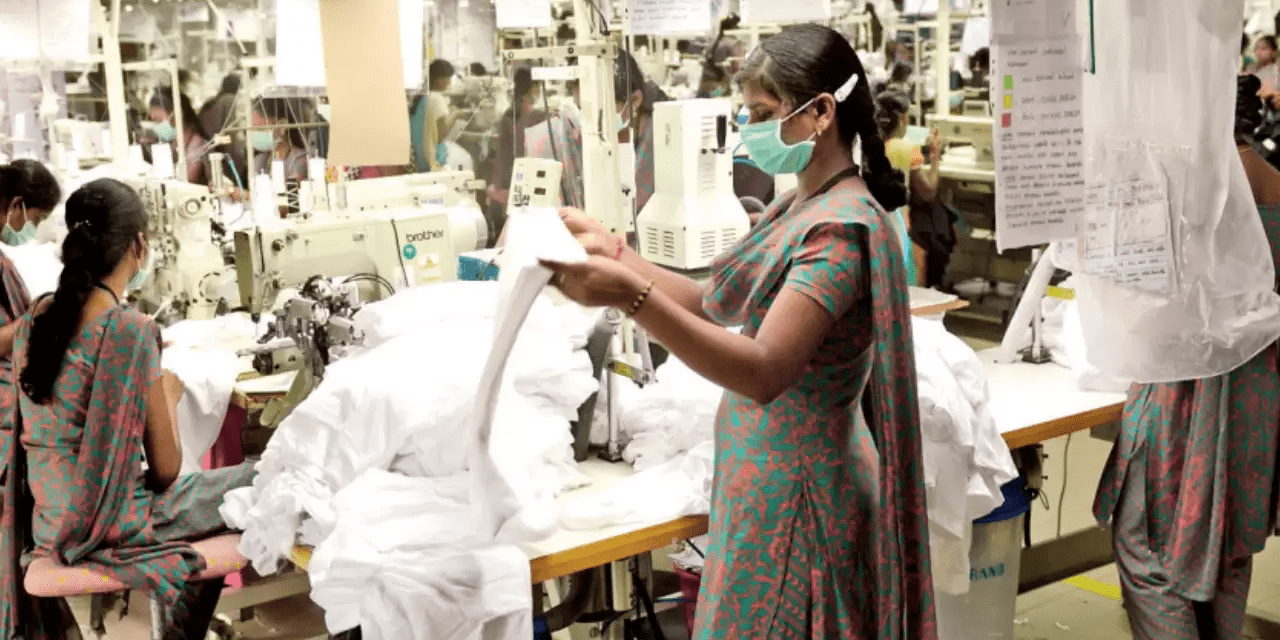The data seemed gleaming at first glance: Tirupur, a centre for the knitwear industry, is expected to have exported more garments in 2022–2023 than it did the year before, by an estimated 825 crore.
After three years of declining garment exports due to Covid, there has been growth for the past two years in a row. Additionally, Tirupur’s export share increased during the past two years in comparison to clothes coming from other Indian garment centres.
The devil, however, is in the details. When expressed in US dollars, the export of clothing has decreased, therefore the apparent increase in export is actually the result of the rupee’s devaluation rather than an increase in volume. Tirupur has thus In 2022–2023, clothing will be exported for about USD 240 million less than they were.
Even the apparent increase in export in terms of rupees in 2022–23 appears to be an illusion because only the first four months of the year saw growth. Exports decreased consistently from August through the following seven months. The exports fell by the most in February and March 2023, or about 1,100 crore less than in the same time period of the previous fiscal. Additionally, there was a sharp decline in shipments in October 2022. 3,290 crores in October of the prior year fell to 2164 crores.
The export trends across India were consistent. Since August of last year, garment exports from all throughout the nation have decreased as well, although the damage at Tirupur was deeper.
The main factor cited for the decline in exports was a decline in demand for clothing in the US and European markets. According to Raja M. Shanmugam, the founder of Warsaw International, one of the top exporters, “the US recession as well as the war in Ukraine are pulling down the trade.”
If one looked at the volume of shipments rather than the value of exports, the decline in trade would be easier to see. Industrialists in Tirupur claim that the quantity has noticeably decreased, despite the fact that they lack cumulative data on the volume delivered. The Union Ministry of Commerce also has statistics that is focused on value rather than quantity.
“Small and medium scale garments are worst hit,” claims President of the Tirupur Exporters and Manufacturers Association, M.P . Muthurathinam, exports goods to Israel and the UK. I only received 25% of my regular orders last year.
Traders predict that things will get worse. Due to a decline in demand on the European market brought on by the conflict in Ukraine, the orders for winter 2023 have been lacklustre. Only 15% of Muthurathinam’s unit’s typical order for the winter of 2023 has been placed, despite having a 300-person staff.
Large-scale manufacturers face a similar situation. “Due to low orders, almost all of Tirupur’s factories are operating at 50% to 60% capacity. Only 40% of the typical orders for the winter of 2023 have been placed with my company, said Shanmugam, a former president of the Association of exporters in Tirupur.The number of bookings is lower than in 2020, when the globe was experiencing a global health crisis due to Covid, according to clothing manufacturers, who predict a difficult year. Domestic players are also feeling pessimistic since Tirupur is falling behind in clothing made of synthetic fibres, despite the fact that this market is expanding. Surat and other Indian textile centres are benefiting from the surge in synthetic fibres.

